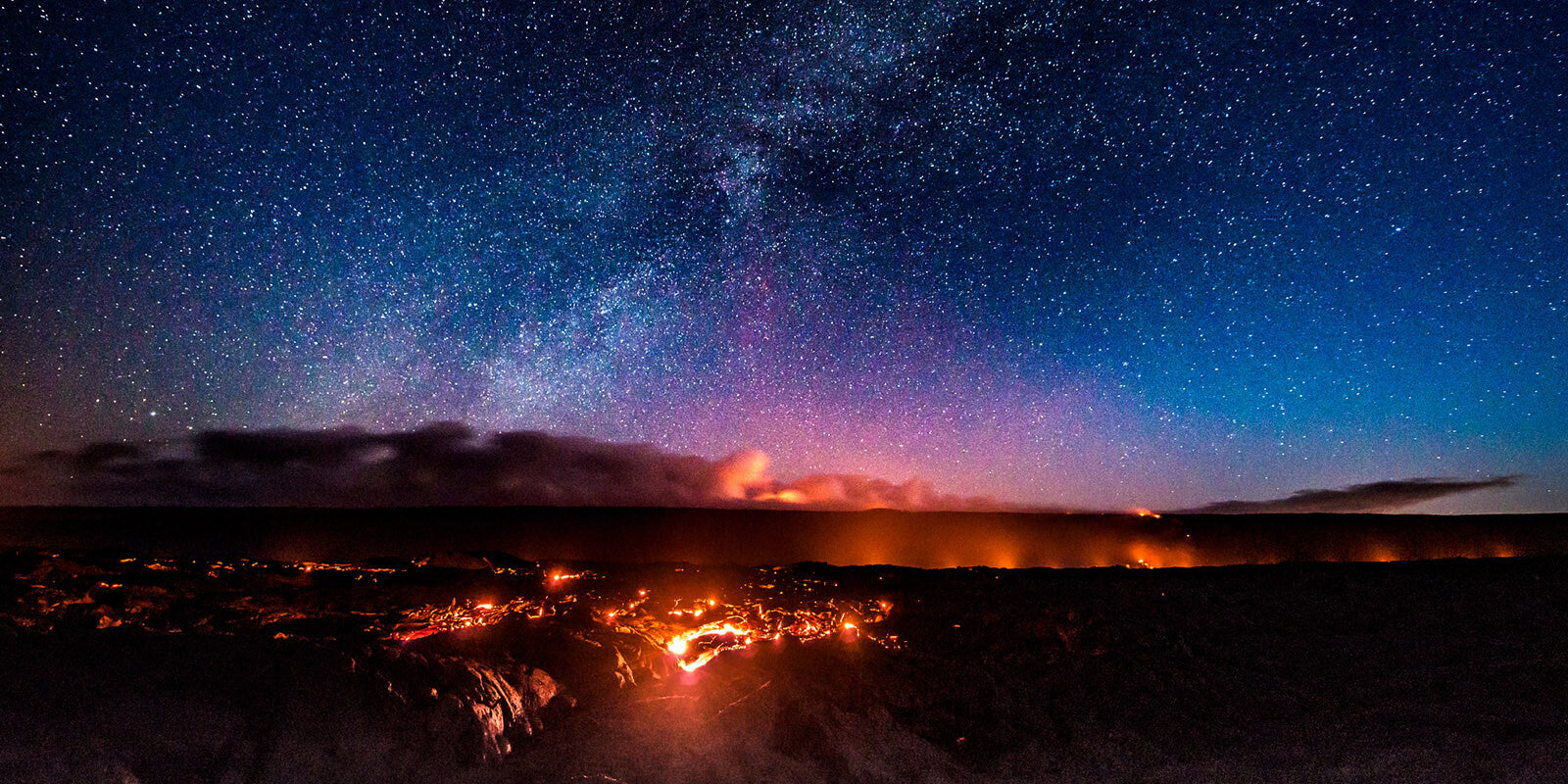Standing on the ridge of an active volcano is not for the timid. If you are an adventurous traveler and have a head for heights, you may want to consider visiting volcanoes as a vacation option. If you can handle the excitement of going up a mountain peak that spews ash, smoke and hot rivers of lava, check out these stunning volcanic destinations!
Mauna Loa & Kilauea, Hawaii Volcanoes National Park, Hawaii
 Located on the Big Island in Hawaii Volcanoes National Park, the Kilauea (one of the most active volcanoes in the world) and Mauna Loa volcanoes rumble. Mauna Loa is one of the largest volcanoes in the world. Hawaii knows how to do volcanoes.
Located on the Big Island in Hawaii Volcanoes National Park, the Kilauea (one of the most active volcanoes in the world) and Mauna Loa volcanoes rumble. Mauna Loa is one of the largest volcanoes in the world. Hawaii knows how to do volcanoes.
The Hawaii Volcanoes National Park is one of the most volatile volcanic destinations in the world. Visiting this site makes you a real volcano tourist. Enjoy watching the lava flows hit the sea by boat, forming new land or drive along the crater rim (assuming no eruptions are underway).
 The best time to visit is between April through October when the climate is fairly stable. To catch the glowing lava flows at their best, take a pre-dawn or after-dark tour. To find out what the volcano is up to before you head that way, check out the National Parks website.
The best time to visit is between April through October when the climate is fairly stable. To catch the glowing lava flows at their best, take a pre-dawn or after-dark tour. To find out what the volcano is up to before you head that way, check out the National Parks website.
Mount Fuji, Tokyo, Japan
 Mount Fuji is still classified as an active volcano, although it has been over three hundred years since it erupted. Looming over the city of Tokyo at Japan’s highest peak, this volcano is quite popular. Mount Fuji has starred in the work of artists and writers and is a popular paragliding take-off point as well as a popular ski resort during winter.
Mount Fuji is still classified as an active volcano, although it has been over three hundred years since it erupted. Looming over the city of Tokyo at Japan’s highest peak, this volcano is quite popular. Mount Fuji has starred in the work of artists and writers and is a popular paragliding take-off point as well as a popular ski resort during winter.
Aside from being a very iconic landmark, Fuji is fairly easy to reach the peak. Three hundred thousand people a year pilgrimage to the top and you can too!
The best time to visit is in July and August when the climate is best and walking routes are open. Head out in the early morning for a full day trek. If you want to see the volcano for its amazing photography opportunities, consider capturing the white-capped peaks during winter months between November through the end of February.
Eyjafjallajökull, Suðurland, Iceland
 This volcano is unique because it is frozen over! Although it is still classified as active, with its last major eruption in 2010, it is not hot enough to melt the glacial ice cap covering it. Eyjafjallajökull is part of a chain of volcanoes that stretches across the Icelandic landscape. Do not be deceived by its calm, unpretentious demeanor. The last time it erupted, it caused chaos with plumes of smoke and ash, congesting international flight paths and leaving thousands of travelers stranded in European airports.
This volcano is unique because it is frozen over! Although it is still classified as active, with its last major eruption in 2010, it is not hot enough to melt the glacial ice cap covering it. Eyjafjallajökull is part of a chain of volcanoes that stretches across the Icelandic landscape. Do not be deceived by its calm, unpretentious demeanor. The last time it erupted, it caused chaos with plumes of smoke and ash, congesting international flight paths and leaving thousands of travelers stranded in European airports.
If you want to check out a volcano that does not require you to climb or hike up steep mountains, Eyjafjallajökull is the volcano you should visit. You can’t go up by yourself because of the icy conditions and dangerous nature of the roads, but you can drive up the summit with a professional driver on a guided tour and let the experts do the work for you!
Avoid visiting in winter months because of sub-zero temperatures. For extra daylight hours and more photography options, visit between June and August. If you want to set your eyes on the fascinating aurora borealis as it dances over the summit of Eyjafjallajökull, head between September and October.


Share:
5 Budget Friendly Travel Destinations
6 Fun Places to See in Tokyo